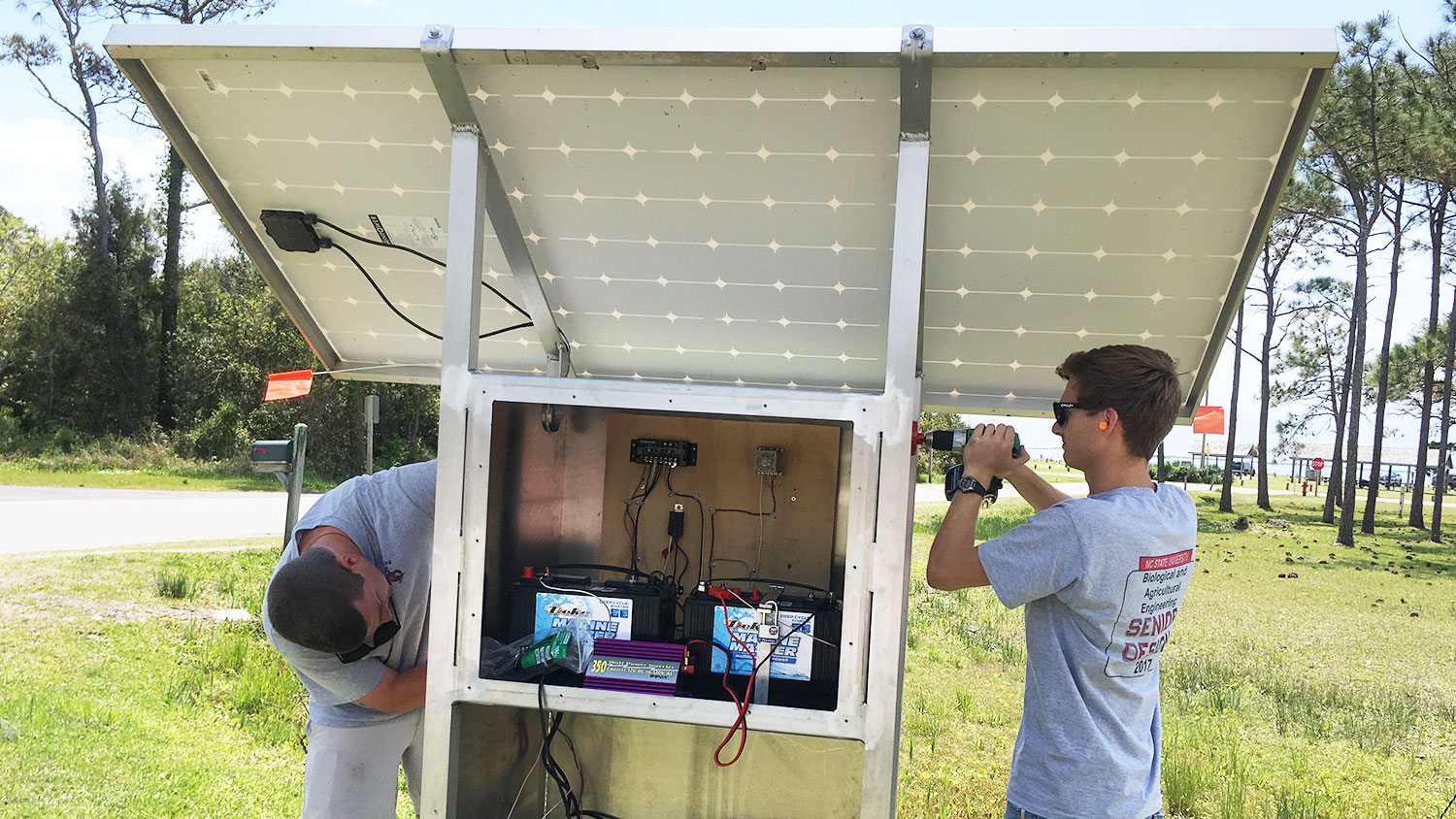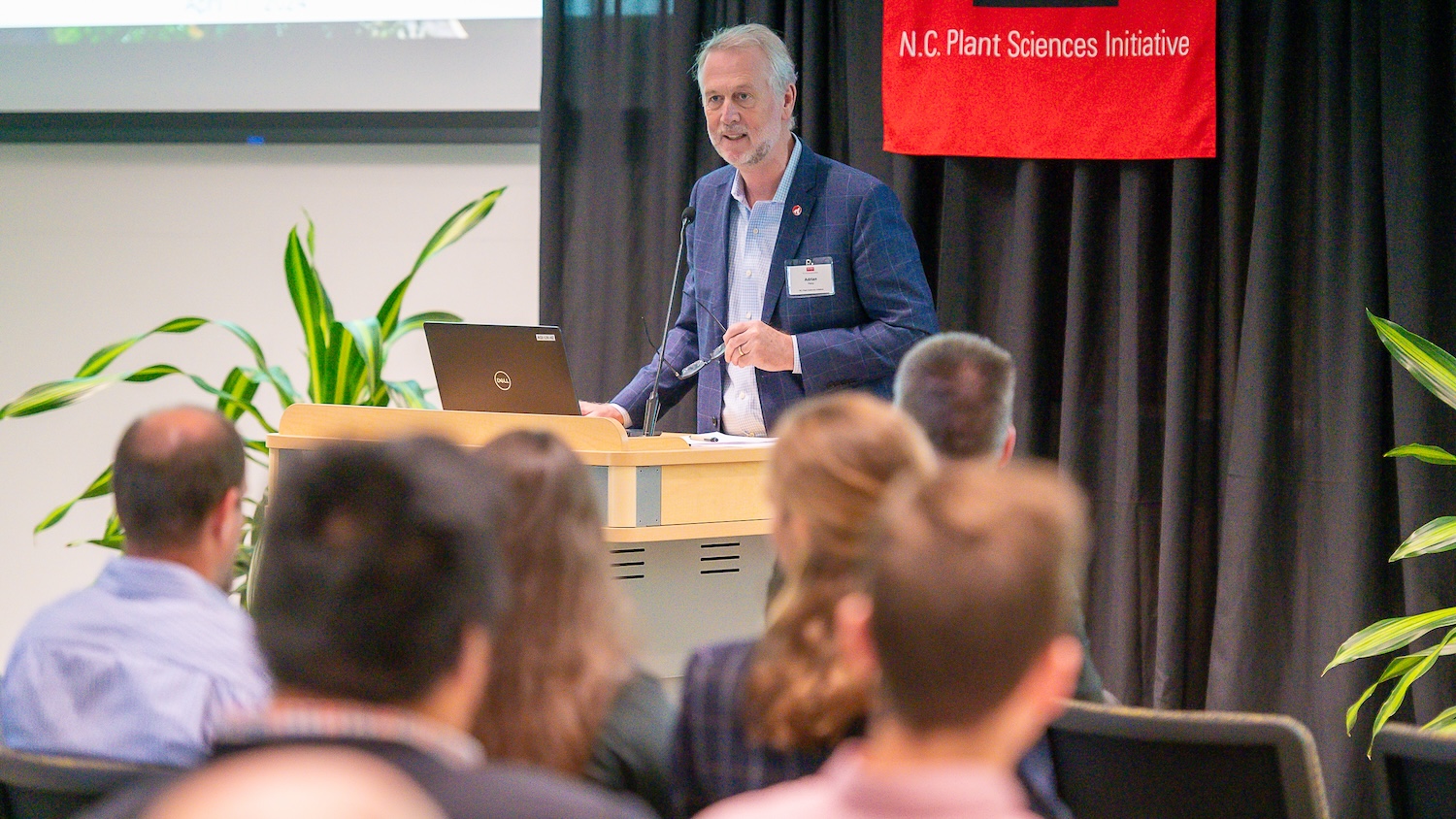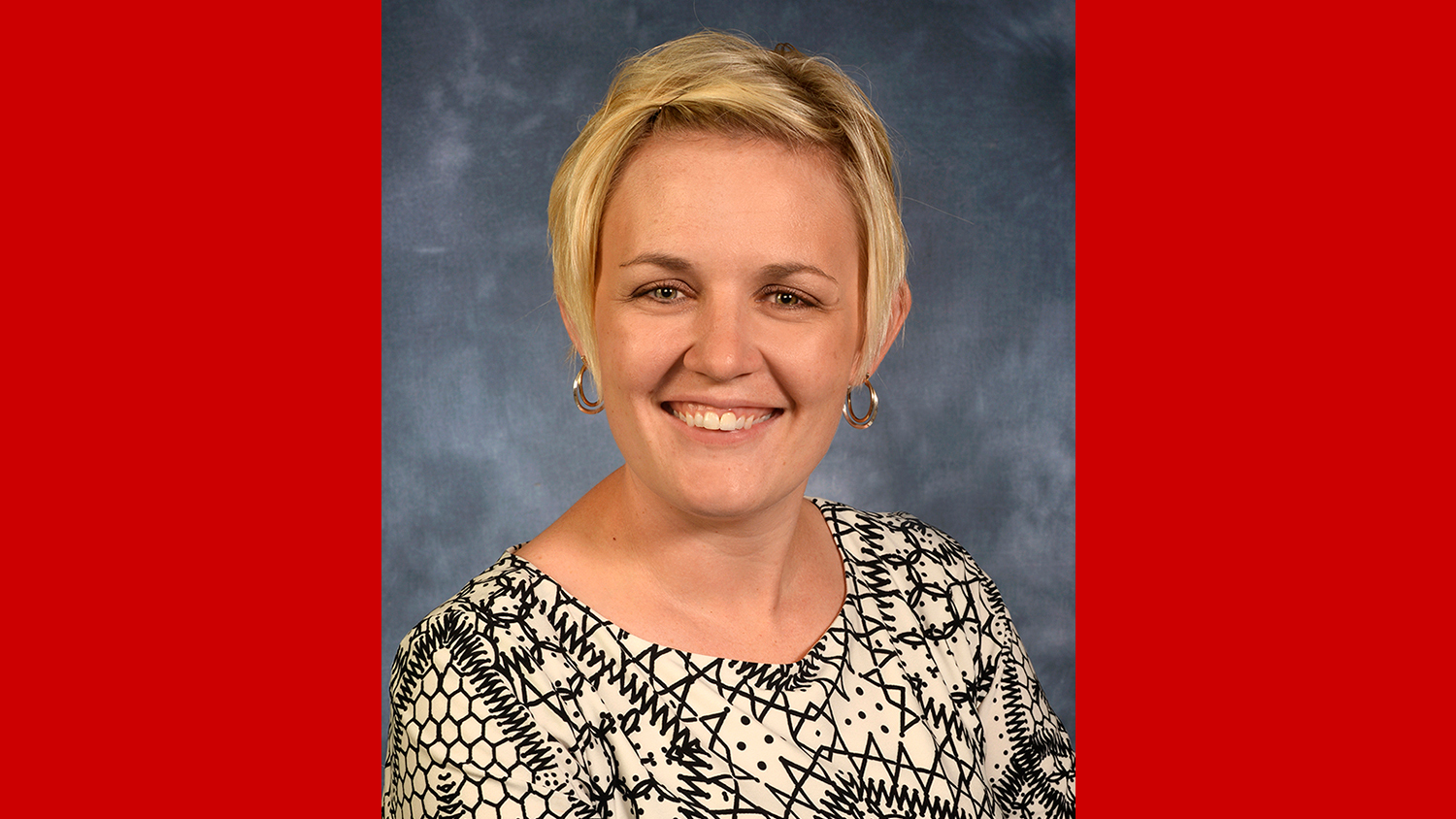Students’ Innovation to Renew a Coastal Wetland

Video by Chris Liotta
Visitors to Harkers Island this summer may wonder about the unusual metal structure at the entrance to the popular Core Sound Waterfowl Museum & Heritage Center.
The “stormwater wetland and solar-powered pumping station” may sound like a mouthful, but it will do one very important thing: resuscitate a wetland that will have significant environmental and educational impact on the island.
Built entirely by students in the Department of Biological and Agricultural Engineering (BAE), the pumping station is the product of months of hard work in the department’s senior capstone program.
The student team — Mason Marriner, Alex May, Kristen Navaroli, Meghan Porter and Taylor Williams — did everything from designing the pump to wiring the control panel to cementing the structure into the ground at Harkers Island. They procured all parts and pieces for the project and burned the midnight oil at Weaver Labs on many occasions.
Their massive effort won them the “Outstanding Senior Design Team” award at graduation.
“This project is one of our ideal case scenarios where we have an outside entity with a real-world problem,” said the team’s faculty adviser Dr. Mike Burchell. “They came to us with the vision and the potential that this could be a great undergraduate design experience … and they saw an opportunity where that wetland could provide water quality ecosystem services.”
Stepping Up to the Challenge
 With a Duke Energy grant in hand, the Core Sound Waterfowl Museum approached BAE alumnus Kris Bass, who owns Kris Bass Engineering, to take on the wetland restoration project. He turned immediately to the department, believing that it would be a great fit for the senior design program.
With a Duke Energy grant in hand, the Core Sound Waterfowl Museum approached BAE alumnus Kris Bass, who owns Kris Bass Engineering, to take on the wetland restoration project. He turned immediately to the department, believing that it would be a great fit for the senior design program.
“From there, Kris and I developed a proposal that we gave to the students, and this particular student group chose it,” Burchell said. “As advisers, Kris and I met with them throughout this process to help guide them and challenge them along the way, and they did a really good job stepping up to that challenge.”
Before the museum and road existed, a natural wetland occupied much of that section of Harkers Island. It was drained years ago to make way for development.
“So our project was to restore that wetland to its natural function, as well as using a pumping station with renewable energy to overcome the low elevation and flat topography,” Navaroli said. “Using a solar-powered pump is a more efficient way to move water from one end of the wetland to the other.”
The pumping station allows water that is stored in nearby ponds and canals “to be lifted and put into the wetland in between rainfall events,” Burchell said. “That way, the wetland would stay a little wetter for longer periods of time … and some of that water that would not normally have made its way into the wetland actually would have a chance then to get put into the wetland to improve the water quality.”
Wetlands provide many important ecosystem services, Navaroli said. “Not only do they treat nutrients, but they improve air quality and water quality.”
The area is going to be designed in a way that also encourages runoff from surrounding parking lots and roads to enter the wetland, which will filter pollutants from the water before it reaches the sound.
Another key benefit of the project? Educational services.
“As part of our project we’re educating the local community, as well as the local middle school, on the importance of wetlands and natural systems and how to treat stormwater, especially in coastal communities because they are such water-sensitive communities,” Navaroli said. “And the use of renewable energy reduces the need for fossil fuels. So we’re able to integrate those two ecosystem services of a renewable energy source and a wetland to create this awesome product that can be used for educational components down the road.”
The pumping station is in place now, and construction of the wetland will take place this summer. The student team created a maintenance log that the museum will use to keep the wetland healthy and thriving for years to come.
“These students have been great to work with … they just jumped right in,” said Teresa Everett, science educator and STEM coordinator at the Core Sound Waterfowl Museum. “The pump is going to do a job so that we can have a beautiful wetland area that everybody’s going to be able to see and take pride in. They’ll understand that there’s a purpose behind the wetland, and we can use it as a teaching tool. That’s what I’m most excited about.”


